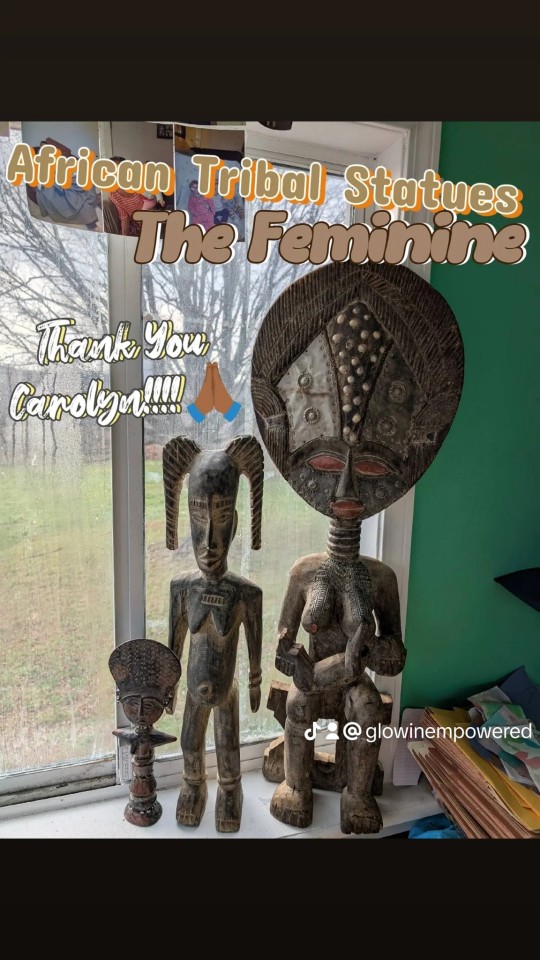#embracevulnerability
Explore tagged Tumblr posts
Text
No Reason to Worry: Embracing the Journey of Emotional Cleansing Shaina Tranquilino July 10, 2024

In the intricate tapestry of human emotions, there are moments when we find ourselves entangled in a web of uncertainty, doubt, and emotional exhaustion. These are the times when we confront our innermost fears, challenge our beliefs, and undergo what can only be described as emotional cleansing. While this process may leave us feeling vulnerable and weary, it's essential to remember that it is a transformative journey—one that leads to greater clarity, resilience, and inner peace.
Embracing Vulnerability
The journey of emotional cleansing often begins with acknowledging our vulnerabilities. We may find ourselves grappling with past traumas, unresolved conflicts, or deep-seated fears that have shaped our emotional landscape. This phase can be unsettling as we confront aspects of ourselves that we may have long avoided or suppressed.
However, embracing vulnerability is not a sign of weakness but rather a testament to our strength and courage. It allows us to heal wounds, unravel emotional knots, and pave the way for profound personal growth. Each moment of discomfort serves as a stepping stone towards emotional liberation.
The Toll on our Spirit
It's natural for the process of emotional cleansing to take a toll on our spirit. We may feel emotionally drained, physically exhausted, or mentally fatigued as we navigate through layers of introspection and self-discovery. This is a crucial time to practice self-compassion and kindness towards ourselves.
Just as a storm eventually gives way to clear skies, so too will our emotional turmoil pass. It's important to nurture ourselves during this period, whether through restful activities, seeking support from loved ones, or engaging in therapeutic practices that resonate with our needs. These moments of self-care are not indulgences but essential tools for replenishing our emotional reserves.
Finding Resilience and Inner Peace
As we persevere through the challenges of emotional cleansing, we gradually unearth a newfound sense of resilience and inner peace. We begin to release old patterns that no longer serve us, make peace with our past, and embrace a more authentic version of ourselves. This transformation is a testament to our capacity for growth and renewal.
Moreover, the journey of emotional cleansing fosters a deeper connection with our emotions and a greater understanding of our inner workings. It allows us to cultivate empathy towards others, as we recognize that everyone faces their own battles and struggles.
The Promise of Renewal
Ultimately, there is no reason to worry amidst the turbulent waters of emotional cleansing. It is a process that, while challenging, holds the promise of renewal and personal empowerment. Each step we take towards healing contributes to our emotional well-being and lays the foundation for a more fulfilling life.
So, if you find yourself amidst the throes of emotional cleansing, remember that this too shall pass. Embrace the journey with an open heart and a gentle spirit. Trust in your resilience, lean on the support of those who care for you, and honor the transformative power of emotional growth. In doing so, you will emerge stronger, wiser, and more at peace with yourself.
Let us navigate this journey of emotional cleansing with courage, compassion, and a steadfast belief in the beauty of our own resilience. There is no reason to worry—only the promise of a brighter, more vibrant existence on the horizon.
#EmotionalCleansing#InnerStrength#SelfDiscovery#Resilience#PersonalGrowth#EmbraceVulnerability#SelfCare#HealingJourney#Mindfulness#Renewal
2 notes
·
View notes
Text
Tagline of My Life: From Fear to Freedom
If humans had taglines, what would yours be? Introduction Taglines are powerful. They summarize a brand’s promise, identity, and mission in a single, compelling phrase. If humans had taglines, they could serve a similar purpose, encapsulating the essence of our individual journeys, values, and aspirations. Drawing from my personal journey of confronting and overcoming fears, if I were to have…
#CelebrateResilience#dailyprompt#dailyprompt-1964#EmbraceVulnerability#OvercomingFears#PersonalJourney#PersonalTagline
0 notes
Photo

Embracing Weaknesses: A Journey Towards Growth As leaders, we are often expected to be invincible, always making the right decisions, and lead with unwavering strength. However, it is important to acknowledge that every leader has weaknesses. It is not about eradicating these weaknesses, but rather about embracing them, learning from them, and using them as catalysts for personal and professional growth. Let's explore the concept of leadership weaknesses and discover five steps to overcome them. 1. Recognize Your Weaknesses: The first step towards overcoming leadership weaknesses is self-awareness. Reflect on your leadership style and identify areas where you often stumble. It could be a lack of patience, difficulty in delegating tasks, or struggles with public speaking. By acknowledging https://leadershipbulletin.com/embracing-weaknesses-a-journey-towards-growth/?utm_source=tumblr&utm_medium=social&utm_campaign=ReviveOldPost
#ActionPlan#CollaborationIsKey#EmbraceVulnerability#FeedbackMatters#GrowthMindset#IncrementalProgress#KnowYourWeaknesses#LeadershipTraining#LeadWithVulnerability#LearnFromOthers#SelfAwareness
0 notes
Text

Today on #InternationalMensDay, let's rewrite the narrative!
"𝗠𝗮𝗻 𝘂𝗽" has been misunderstood for too long. It silences emotions and ignores vulnerability.
True strength is in speaking up, opening up, and sharing what's on our minds. Men, it’s okay to not have it all together all the time!
What matters is supporting each other, being heard, and embracing the courage to be vulnerable. Let’s break the stigma and change the conversation!
Here’s to you...
𝗛𝗮𝗽𝗽𝘆 𝗜𝗻𝘁𝗲𝗿𝗻𝗮𝘁𝗶𝗼𝗻𝗮𝗹 𝗠𝗲𝗻'𝘀 𝗗𝗮𝘆!
0 notes
Text
youtube
#BuildResilience#EmbraceVulnerability#CreativeStrength#NatureHealing#MindfulMovement#GrowthMindset#SupportNetwork#ServiceToOthers#SpiritualWellness#InnerStrength#ResilientLife#EmotionalWellbeing#TransformChallenges#ThriveAdversity#EmpoweredLiving#Youtube
0 notes
Text

ऋतिक रोशन को क्या हुआ? उनकी अप्रत्याशित चोट का खुलासा
#HrithikRoshan#Strength#Injury#MusclePull#Crutches#Vulnerability#Recovery#Support#EmbraceVulnerability#GetWellSoon#Bollywood#Actor#Inspiration
0 notes
Text
The Key to Releasing Attachment
Recognizing and releasing unhealthy attachments is the biggest step in the journey of self-improvement, self-love, and self-actualization. Attachments are the source of pain in our lives.
At its core, an attachment originates from the belief that something outside of ourself possesses that which we lack internally. Often, this belief traces back to childhood, where abandonment or abuse birthed feelings of inadequacy, shame, and the pursuit of conditional love.
We begin to craft narratives around our attachments, convincing ourselves that certain external people or circumstances hold the key to our happiness and safety. We desperately cling to things, believing that they are the only way to secure our well being.
When we lack validation and safety from ourselves, chasing those things externally is the only way that we know how to obtain them. In this pursuit we unknowingly abandon the self, altering behaviors, suppressing vulnerability, compromising on boundaries - all in an attempt to retain control over the external factors validating our experience. Slowly, we lose ourselves - our values, emotions, and directions.
Acknowledging the narratives that we construct, recognizing the unhealthy patterns that we may be repeating, and owning up to self-abandonment is how we dissolve these things.
The root of our attachment to external factors lies in our inner child's need for validation and safety. To rectify this, we turn inwards, towards self-love. Inwards, we recognize that we are whole. We show ourselves that we will no longer abandon the self, and we build safety and groundedness. We provide the love and safety that we always looked for externally. We realize that everything we've ever needed resides within. When we create feelings of safety and love within ourselves, we know that we do not need anything or anyone. Authenticity becomes how we no longer abandon the self. We know that we do not need to minimize ourselves for anything, because we can provide everything that we have ever needed on the inside.
This allows us to let go of attachment and outcomes. Letting go of outcomes allows us to be fully authentic and to attract the correct experiences into our lives. We attract the right people and experiences from a place of true authenticity. We know that we do not need anything, so these people and experiences only add to our life.
Love for the people in our lives which is rooted in authenticity and detachment from outcomes is unconditional. The key to releasing attachment is in your hands. Create safety and validation for yourself, and choose to not abandon the self. Consciously select your own energy and your own mind for validation, and you will feel more free than ever. :)
#AuthenticLiving#SelfLoveRevolution#LettingGoOfOutcomes#UnconditionalLove#EmbraceVulnerability#CreateYourOwnSafety#ChooseYourOwnEnergy#ReleaseAttachment#PersonalGrowth#TransformativeSelfLove#EmpowerFromWithin#JourneyToAuthenticity#HealingNarratives#OwnYourStory#InnerStrength#MindfulLiving#FreeYourself#PositiveAttachments#SoulfulSelfDiscovery#SelfValidation#ConsciousLiving#EmbraceYourWholeness
1 note
·
View note
Text
Life Lens - Entry 79
Unicorn Love Well, it’s pretty damn rare to find someone who’s got the emotional and mental patience and maturity to work through stuff in a relationship. I mean, seriously, finding someone who can actually sit down and have a real conversation without letting their ego take over is like finding a unicorn. In love, I’ve learned that I’ve gotta be willing to check my pride at the door. It’s a…
View On WordPress
#CommunicationIsKey#ConnectionOverPride#EgoVsLove#EmbraceVulnerability#HealthyRelationships#LoveWithoutEgo#RelationshipMaturity#TheLoulouge#UnicornLove#ValuingConnection
0 notes
Text
Discover self-l0ve in every relationship: Cultivate the link of authenticity and attention
In the intricate tapestry of any human relationship, self-love serves as the common thread that weaves authentic bonds, compassion, and mutual growth. At its most basic, self-love in relationships refers to the practice of maintaining healthy feelings of self-esteem, self-acceptance, and personal happiness while engaging in romantic relationships. empathize with others. This profound concept…

View On WordPress
#AuthenticConnections#CultivatingSelfWorth#EmbraceAuthenticity#EmbraceVulnerability#EmotionalIntimacy&039;#empoweredcouples#FulfillingConnections#HealthyBoundaries#innersecurity#IntimacyAndTrust#LoveAndAuthenticity#mutualgrowth#nuturinglove#relationships#ResilientPartnerships#self-love#SelfLoveInRelationships#TransformativeLove
0 notes
Text
instagram
#transcendingfear#releasefear#chooselove#healwithin#fearlessliving#unleashpotential#consciousconnections#embracejoy#overcomelimitations#findpurpose#livewithpassion#embracevulnerability#navigategracefully#embraceuncertainty#transformreality#Instagram
0 notes
Text
Embracing Softness: The New Paradigm of Strength Shaina Tranquilino May 24, 2024

In a world often characterized by its relentless pursuit of power and dominance, there emerges a quiet revolution, a paradigm shift that challenges conventional notions of strength. This revolution champions softness as the new emblem of resilience, empathy, and authentic power. In a culture that often equates strength with hardness, embracing softness is not only a counterintuitive concept but a transformative one.
Softness, far from being a sign of weakness, embodies a depth of character and inner fortitude that is often overlooked. It is the ability to remain open-hearted in the face of adversity, to show vulnerability without fear, and to approach challenges with a spirit of compassion and understanding.
In the realm of interpersonal relationships, the power of softness is undeniable. It fosters deeper connections, promotes trust, and encourages authentic communication. Rather than resorting to aggression or dominance, softness allows us to listen deeply, to empathize with others, and to respond with kindness and empathy.
Moreover, embracing softness requires immense courage. It takes strength to resist the urge to build walls around our hearts, to confront our own vulnerabilities, and to extend compassion to both ourselves and others. It is a radical act of self-love and self-acceptance, transcending the limitations of ego and embracing the full spectrum of human experience.
In leadership, too, the paradigm of softness is gaining traction. Traditional leadership models often prioritize assertiveness and control, but true leadership is about inspiring others through authenticity and vulnerability. A leader who embodies softness leads with empathy, humility, and emotional intelligence, creating a culture of trust, collaboration, and innovation.
Furthermore, the ecological and social challenges facing our planet demand a shift towards softer, more sustainable approaches. Rather than exploiting natural resources for short-term gain, we must cultivate a relationship of reverence and reciprocity with the Earth. Softness in this context means approaching our environment with humility, listening to its needs, and working collaboratively to nurture and protect it for future generations.
In essence, embracing softness is about embracing our humanity in its entirety. It is about recognizing that true strength lies not in domination or control but in vulnerability, empathy, and authentic connection. It is a radical reimagining of power—one that prioritizes compassion over competition, collaboration over coercion, and love over fear.
So let us embrace softness as the new paradigm of strength. Let us cultivate a culture that values empathy, kindness, and authenticity. And let us remember that in softness, we find the resilience to weather life's storms, the courage to face our fears, and the capacity to create a world that is more compassionate, just, and sustainable for all.
#SoftnessIsStrength#EmbraceVulnerability#NewParadigmOfStrength#PowerOfCompassion#LeadershipInEmpathy#RadicalAuthenticity#CultivateConnection#ResilienceInSoftness#KindnessMatters#SustainableFuture
0 notes
Text

This is a time of mixed experiences. I think of my bloodline and the fear, the pain, the tears, the strength and the courage that my ancestors went through. I think of the people who were betrayed, killed, R***d and misplaced in their own land. 2 cultures of people lost their families, homes and culture all in one swoop. I am grateful to have the blood flow, however, that doesn't take away from the ancestral pain that we carry still till this day. I am grateful for the pillow that we share. I want to say even though there are others that will not acknowledge our pain, but I see you and you are cared for, you are worth shining your light, you are worth not backing down. You matter and what happened matters. 💔❤️🩹🧚🏾♀️✨
#youmatter #embracevulnerability #safespace #ancestors #selfcare
#dna#inspiration#motivation#self-awareness#meditation#growth mindset#mindset#self-realization#spiritual awakening#spiritual growth#spiritual journey#ancestry#ancestors
2 notes
·
View notes
Photo

Embracing Weaknesses: A Journey Towards Growth As leaders, we are often expected to be invincible, always making the right decisions, and lead with unwavering strength. However, it is important to acknowledge that every leader has weaknesses. It is not about eradicating these weaknesses, but rather about embracing them, learning from them, and using them as catalysts for personal and professional growth. Let's explore the concept of leadership weaknesses and discover five steps to overcome them. 1. Recognize Your Weaknesses: The first step towards overcoming leadership weaknesses is self-awareness. Reflect on your leadership style and identify areas where you often stumble. It could be a lack of patience, difficulty in delegating tasks, or struggles with public speaking. By acknowledging https://leadershipbulletin.com/embracing-weaknesses-a-journey-towards-growth/?utm_source=tumblr&utm_medium=social&utm_campaign=ReviveOldPost
#ActionPlan#CollaborationIsKey#EmbraceVulnerability#FeedbackMatters#GrowthMindset#IncrementalProgress#KnowYourWeaknesses#LeadershipTraining#LeadWithVulnerability#LearnFromOthers#SelfAwareness
0 notes
Text
youtube
Awaken Your Inner Genius Through Vulnerability 💡✨ by Mistico Traveler - Design Your Best Life Discover a Life of True Freedom: https://ift.tt/WwFK6fL. Discover how embracing vulnerability can unlock your hidden genius. By exploring our interests deeply, we can transform fear of the unknown into our greatest strength. Join us in this journey of self-discovery and creativity! #InnerGenius #EmbraceVulnerability #SelfDiscovery #CreativityUnlocked #ExploreYourPassions #StrengthInWeakness #UnlockPotential #DareToDiveDeeper #InspireYourself #AwakenYourMind via YouTube https://www.youtube.com/watch?v=XowBCx9eYqg
0 notes
Text
Soulful Strategies: Embracing Spiritual Principles for Transformative Workplace Dialogue

In the bustling corridors of today's workplaces, dialogue serves as the lifeblood of collaboration, innovation, and organizational growth. Yet, amidst the cacophony of voices vying for attention, there exists a deeper truth—a sacred dimension of communication that transcends mere words and gestures. This truth lies at the intersection of spirituality and dialogue—a realm where authenticity, empathy, and interconnectedness converge to foster profound understanding and meaningful connection.
"Soulful Strategies: Harnessing Spiritual Principles for Workplace Dialogue" invites us to explore the transformative power of dialogue infused with spiritual wisdom. It is a journey into the heart of communication—a journey that transcends the boundaries of language and culture to touch the very essence of our humanity.
At its core, spirituality speaks to the interconnectedness of all beings—the recognition that we are part of something greater than ourselves. In the context of dialogue, this recognition serves as a guiding principle, shaping our interactions with humility, compassion, and reverence for the inherent dignity of every individual.
So, how do we harness the power of spiritual principles to enrich workplace dialogue and cultivate a culture of connection and collaboration? Let's delve into some soulful strategies:
Presence and Mindfulness: In the fast-paced world of business, it's easy to get swept away by the tide of emails, meetings, and deadlines. Yet, true dialogue requires presence—the ability to fully engage with others in the here and now. By cultivating mindfulness—the practice of being fully present in the moment—we can deepen our connection with ourselves and others, fostering authentic dialogue grounded in awareness and receptivity.
Empathy and Compassion: At the heart of spiritual dialogue lies empathy—the capacity to understand and share the feelings of another. When we approach conversations with genuine curiosity and compassion, we create space for mutual understanding and healing. By listening deeply to the experiences and perspectives of others, we honor their humanity and cultivate a culture of empathy and inclusivity.
Authenticity and Vulnerability: Spiritual dialogue thrives on authenticity—the willingness to show up as our true selves, flaws and all. When we embrace vulnerability—the courage to be seen and heard in our entirety—we invite others to do the same, fostering trust and intimacy in our interactions. By sharing our stories, struggles, and aspirations openly and honestly, we create a foundation for meaningful connection and collaboration.
Humility and Openness: In the spirit of humility, we recognize that we do not have all the answers—that true wisdom arises from the collective insights of diverse perspectives. When we approach dialogue with openness—the willingness to question our assumptions and expand our horizons—we create space for innovation and growth. By embracing a spirit of curiosity and humility, we invite new ideas and possibilities into our conversations, enriching our understanding and sparking creative solutions.
Gratitude and Appreciation: In the hustle and bustle of daily life, it's easy to overlook the beauty and blessings that surround us. Yet, gratitude—the practice of acknowledging and appreciating the goodness in our lives—can transform our dialogue from mundane to magical. By expressing gratitude for the contributions of our colleagues and the gifts of the present moment, we cultivate a culture of appreciation and abundance, fostering joy and resilience in our workplace.
Intention and Alignment: In every dialogue, there is an underlying intention—a deeper purpose that guides our interactions and shapes their outcomes. By clarifying our intentions and aligning them with our values and aspirations, we infuse our dialogue with meaning and direction. Whether we seek to foster collaboration, resolve conflicts, or inspire innovation, our intentions serve as guiding stars, illuminating the path toward our shared goals.
In conclusion, "Soulful Strategies: Harnessing Spiritual Principles for Workplace Dialogue" invites us to embark on a journey of discovery—a journey into the heart of communication, where authenticity, empathy, and connection reign supreme. By embracing spiritual wisdom and embodying soulful strategies in our dialogue, we can create workplaces that honour the sacredness of human connection and cultivate a culture of collaboration, creativity, and compassion. As we navigate the complexities of the modern workplace, let us remember that true dialogue is not just a means to an end, but a sacred dance of hearts and minds—a celebration of our shared humanity and the infinite possibilities that arise when we come together in authentic connection.
#SpiritualDialogue#WorkplaceCommunication#AuthenticConnection#EmpatheticDialogue#MindfulCommunication#SoulfulStrategies#CollaborativeCulture#WorkplaceEmpathy#Interconnectedness#MeaningfulDialogue#HeartfeltConversations#EmbraceVulnerability#AuthenticityMatters#InclusiveWorkplace#CreativeCollaboration
0 notes
Text

✅Unlocking Your True Superpower: Embrace Your Strengths and Vulnerabilities
Finding your true superpower isn't always straightforward. It's a blend of different elements that make you unique. Here's how you can discover and harness your true gifts:
🟨 Key Elements:
- Physical Gifts
- Talent/Skill
- Passion/Interests
🟨 When These Elements Come Together:
- You become real
- You become relatable
- You become authentic
- You become attractive
🟨 Why Embrace Vulnerabilities?
- They make you relatable
- They show authenticity
- They balance your strengths
🟨 Reflect and Share:
- What are your true gifts?
- How have you harnessed your vulnerabilities to benefit your personal and professional life?
Unlock your superpower by embracing both your strengths and vulnerabilities.
#PersonalBranding #Authenticity #TrueGift #EmbraceVulnerability #StrengthsAndWeaknesses #CareerGrowth
0 notes